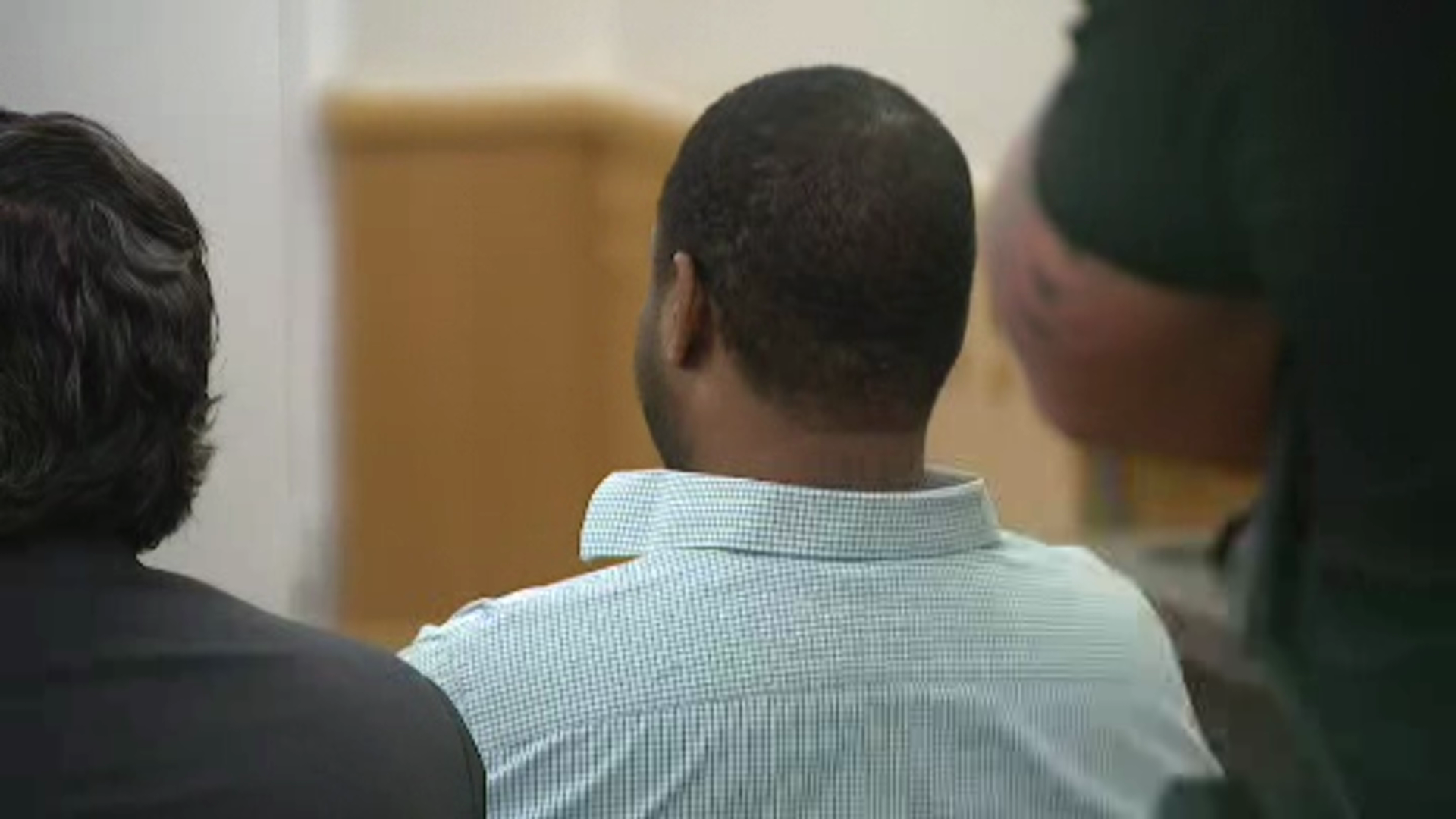Fluorescent lights beam down upon a group of 12 girls.
The Houston Chronicle reports they stand in a circle inside the gray walls of the Harris County Juvenile Detention Center. Their eyes follow along as each girl says her name and describes how she is feeling, accompanied by a pose or gesture. Jessica whose full name is not being used, is feeling confident and juts her hip to the side and puts her hands on them. Brittney, feeling energetic, draws an invisible arch in the air with fingers spread in jazz hands.
Lizzie shrugs and throws her hands in the air, a vapid look on her face -- she is feeling moody.
Throughout the next hour, Lizzie's face gradually softens as she focuses on learning a hip-hop dance demonstrated by Houston Ballet instructors Jennifer Sommers and Lauren Anderson. By the end of class, Lizzie is laughing.
The dance class is one of seven arts programs launched in various Harris County Juvenile Probation Department facilities since January as part of a new collaboration between Harris County and Theater District Houston. While arts programs have been implemented in juvenile and criminal detention facilities in Harris County and other districts in states such as California and Michigan, the rollout of these programs represents a widespread, coordinated collaboration. And the educational programs not only educate, say those involved, they provide a supportive, creative outlet for young people kids -- many of whom have experienced trauma -- to process their experiences, develop their characters and simply be kids.
"These programs are, for these youth, the hope that they can continue to reinvent themselves and find more productive and socially acceptable outlets for their energy and their creativity," said Michele Deitch, an attorney and criminal-justice consultant who teaches at the University of Texas at Austin's LBJ School of Public Affairs.
The collaboration came to fruition when Kathryn McNeil, CEO of Theater District, last summer approached then-Harris County Executive Judge Ed Emmett for funding to expand their outreach. The company received $82,000 from the county, McNeil said, to teach artistic expression to teens in the juvenile justice system through programs led by the Houston Grand Opera, Da Camera, Houston Symphony, Houston Ballet, Alley Theatre, Theatre Under the Stars and Society for the Performing Arts.
Local
The latest news from around North Texas.
Applause and cheers followed Chris as he walked up to a podium at the front of a large, open room at Youth Village, a folded sheet of paper in his hand. Chris raised the microphone to his mouth, a half-smile turning into laughter as he stumbled over the first line of his poem.
He started over, describing through rhymes and prose how his father used to abuse his mother.
"You were my hero, then you turned into a villain," Chris said.
During this slam poetry competition in March, other kids recounted sexual abuse from family members, hearing gunshots in their neighborhoods and finding cockroaches in their homes. The names of the children in the story have been changed to protect their privacy because they are juvenile offenders.
To end up in this treatment-focused facility in Seabrook often means you have experienced extreme trauma, although mental health is an issue across the board for kids in the county's juvenile probation department. According to the department's 2017 annual report, nearly 2,500 of the 4,463 detained kids that year had been referred to the psychological and social services unit for therapy.
"A lot of my fights are about kids with mental illness," said state Rep. Gene Wu, a juvenile justice lawyer.
He frequently urges colleagues to recognize the behavioral impacts of trauma and challenging environmental conditions.
"The kids are not necessarily bad because they want to be bad, but because we made them bad," Wu said.
This is where art can serve as a powerful tool.
Chris, for instance, said he signed up for the poetry slam program -- put on by the Alley Theatre, with eight sessions leading up to the competition -- so that he could express himself. Relaying his experiences through poetry, he said, was easier for him than just saying it.
"Art just allows you to express yourself differently," said McNiel. "You can use your words differently to tell a story, and I think that frees up the kids to express their emotions, their feelings, in a way more accessible for them."
Kula Moore, of Art Therapy Houston, said that art is particularly powerful for people recovering from trauma.
"Trauma erodes our ability to trust or feel safe in our own bodies," said Moore, an art therapist. "The art process can really help to integrate the mind and body, to recognize the ways that you coped with this and are adaptive."
Using art to work through trauma is also empowering, she said, because art highlights each victim's strength and resilience. It shows that the victims didn't just survive -- they thrived.
The slam poetry teachers, Vincent Johnson and Sharon Young (who goes by Rain), wanted to harness that feeling of agency and empowerment.
The pair came armed with poetic devices, games and personal stories. They would give the students cut-up poems, then have them put the poems back together to practice structure. They would have the students write group poems. They would take away their students' first poem drafts, then give it back to them after they finished a second draft, so the students could combine both into the final product.
Most importantly, Johnson and Young told the kids to write about whatever they wanted -- and they didn't treat them any differently than they would students not in juvenile detention.
"I think they picked up on that," said Young. "They would thank us every day. They loved the fact that they could express themselves."
Johnson and Young also teach slam poetry at other schools in the Houston area. Disparities shine through when they compare the two groups of students.
"(The other students) have the same learning disabilities and (trauma) -- but they ended up in a private school," Johnson said. "Then you have these kids in the juvenile justice system. I know had they been guided the right way, they wouldn't be here."
Chris' poem about his parents ended with him urging people to treat women well, saying, "Women's lives matter." He won the poetry slam competition. Now, he dreams about writing an entire book of poems.
Back at the JDC, the girls' eyebrows furrow in concentration as they attempt to mimic the fluid movements of Sommers and Anderson, the Houston Ballet instructors. They plieed, strode and kick-ball-changed their way past posters that read "Balance is Beautiful" and "Start by Starting," to the beat of Flo Rida's song "Troublemaker." Lizzie, no longer moody, repeats sequences alone when the group finished them, silently mouthing the beat to herself as she tries to master each move.
The class took discipline and focus.
While studies have demonstrated lower recidivism rates for adults and juveniles who participate in art programs, the objective for the Theater District arts programs is to develop their students' characters and enrich their lives.
"Art is introduction to empathy, it's bonding, it's all these things that we take for granted if we grew up in a stable environment and had role models," said Chaney Tullos, assistant director of education at Alley Theatre.
When Sommers and Anderson teach hip hop at the JDC and at the Burnett-Bayland Reception Center (BBRC) in southwest Houston, their goal is to not only teach their students dance, but to also develop their cognitive, social and physical skills.
Sommers proudly recalled how her male students at the BBRC worked together to learn difficult moves, like popping and locking or shoulder stands. They helped each other, and despite their exhaustion, didn't give up.
"The boys were in a place where they understood what good choices are and eagerly wanted to make them," Sommers said. "I remember driving away and thinking that I hope they have an environment where they can."
Many studies have shown that children who end up in the juvenile justice system often grew up in challenging, unsupportive environments, and may have learning disabilities and mental health issues.
Wu has witnessed those trends himself during his time as a juvenile lawyer.
"Most, if not all, these kids -- their entire lives they've been told that they're worthless," Wu said, getting choked up. "They were told you'll never amount to anything. So after a while, they kind of give up."
The Theater District arts programs work to build the students' trust and confidence through supportive relationships and genuine connections.
Instructors create energetic and fun atmospheres, they open up to their students, and express how they're proud of them. The end of each finished dance sequence, the final word of each poem, is met with a rupture of applause, cheers and beaming smiles from the teachers -- and the students fail to hide the smiles they return.
Young wrote and performed a poem for her students, called "I See You." She alludes to each one of her students throughout the poem, without using their names -- but they know she's describing them.
"It burns my soul to see your smile hidden behind sweat shirt walls.," she wrote. "Accept your beautiful imperfections that makes you perfect at being you / The YOU, you have yet to see."



